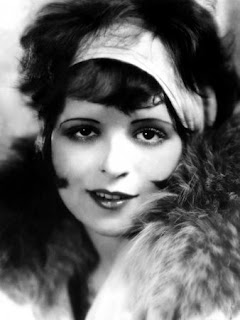1920s fashion
The fashion of the 1920s
Women's fashions of the 1920s are a large part of the Jazz Age identity. New technology and the end of the horrors brought about by World War I and the 1918 Flu Pandemic gave rise to a youthful exuberance personified by the Flapper. Contrary to popular misconception, the short skirts and bold make up of the flapper did not rule the fashion of the day but were an iconic and memorable look. Fashion periods are usually distinguished by the female silhouette which presented a boyish figure with flattened breasts and loose clothing for most of the decade.
The drop waist shift dresses of the 1920s relieved women of the last vestiges of Edwardian formality. Less tailoring, as well as the availability of the sewing machine meant that women could easily make fashionable clothing at home so that high fashion was no longer restricted to the elite.Women felt empowered when they won the right to vote (1920 in the US, 1928 for 21 year old women in Britain). The widespread use of the automobile, radio, and increased educational opportunities encouraged young women to cut off their hair and kick up their heels.
The names of the most Famous 1920's Fashion designers included Gabrielle "Coco" Chanel, Jeanne Lanvin, Elsa Schiaparelli, Sonia Delauney, Jean Patou, Madeleine Vionnet, Florrie Westwood, Norman Hartnell, Hilda Steward and Victor Stiebel.
Much of the cultural change of the decade still lives on in the present. Indeed, 1920s women's fashion was perhaps the most influential in creating modern tastes in women's clothes, and the view of and towards women.
1920's Fashion attracted unprecedented publicity from the movie studios that publicized pictures and photographs of their famous movies stars who were idolized by millions of women who wanted to emulate the clothes worn by their idols.
These women became the most influential of all the fashion icons of the era and their eager fans followed the latest trends and fashion styles. The exuberant and unconventional celebrities challenged the traditional styles worn by women by wearing short skirts, unrestricted clothes and make-up.
Colleen Moore, a famous movie star of the era described the 1920's Fashion worn by the flappers as smart and sophisticated, with an air of independence and who were so casual about their looks and clothes and manners to be almost slapdash. 1920's Fashion represented modernism and women who were determined to free themselves of the shackles of the Victorian era.
The most popular actress of this silent screen era was Clara Bow who embodied much of the attitude women had in this time. Clara was born in the Brooklyn slums, grew up in poverty, but she was reckless, generous, with a care-free attitude. She embodied the sexuality and the love of sex ("It") of the era and she gave it to her audience with no apologies. Smoking, drinking, and going to petting parties, she became known as the original "It Girl."
Her popularity caused many women to imitate her style, and she was one of the biggest influences on women's fashion in the 1920s. However, when movies moved out of the silent era, when movies became "talkies," her career came to a sudden end due to her high nervous voice, and her heavy Brooklyn accent.
Before the 1920s, women usually strove to look older than their age. The change in outlook that distinguished the 1920s changed this, and for the first time, that previous norm reversed. Women now strove to maintain the look of youth, copying the look of younger women and young teens.
With the trend toward the pubescent girl look, hair was styled short, with curls or shingled. At the beginning of the decade, the bobbed hair-cut was most popular, but by 1923, the shingle cut takes over. The hair is flat and close to the scalp, its parted on the side or in the center, and a single large forward sweeping curl is at each ear.
Eyebrows were thinned to emphasize a young beautify face. Makeup was added around the eyes to make them look younger and larger. Lips were painted to make the mouth narrower from side-to-side while emphasizing the bow of the upper lip and the depth of the lower lip — the cupid's bow lip style made popular by Clara Bow.
Dresses came in all kinds of colors and shapes, but a very common dress seen in the late 1920s was a thin, loose silk dress with a thin belt around the waist with similar colored, delicate embroidery on the chest. The hemline wandered up and down, some women loved showing leg, others didn’t. Fortunately in the 1920s, designers catered to all different tastes.
Another modern style was the two-piece effect. These sport dresses could be worn as a suit when weather permitted. The attractive all-wool tweed model had a long vestee and collar of a harminizing shade of flannel. The skirt had pleats stitched partly down.
In New York women wore rayon crepe frocks year round because it was rich looking, but more affordable than silk. These dresses were designed on the straight, simple, yet distinct, lines. For daytime frocks, nothing was more luxurious than the lustrous all-silk Charmeuse. 





















No comments: